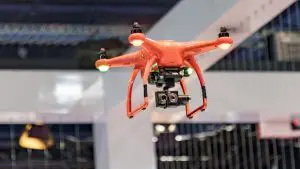The Consumer Electronics Show (CES) which concluded earlier this month is the largest annual conference and expo for anything or everything in electronics in the continental USA. By some estimates, CES 2017 exceeded the previous year record, topping 177K+ attendees. In such a large conference, enabling technologies like thermal management often take a backseat to the … [Read more...]
A Note from the Technical Editor
Year 2017 is already off to a good start… a warm welcome to all our readers from Electronics Cooling! As electronics continue to pervade all walks of our lives, thermal management remains front and center as one of the important enablers in product realization. At the risk of repeating myself, I must say that there has never been a better time than the present to be an … [Read more...]
Inductive Wireless Charging is Now a Thermal Design Problem
Introduction: It is interesting how different parts of a value chain speak differently, sometimes wildly differently, about a product or feature but they may use the exact same words. For example, both the consumer and the thermal engineer want the device to have “cool” features. Wireless charging is one such hardware feature [1]. Wireless charging was included in over … [Read more...]
Cooling Circuits with Nanochimneys in Carbon Nanotubes
The extraordinary properties of Graphene are well known, and in the context of electronics thermal management and reliability, it is about 200 times stronger than the strongest steel and conducts heat and electricity very efficiently. Both graphene and carbon nanotubes consist of six-atom rings, which create the well-known hexagonal Honeycomb structure, and both excel at the … [Read more...]
Thermal Facts & Fairy Tales: 7 years of college down the drain…
...might as well join the Peace Corps… - John "Bluto" Blutarsky1 I would hazard a guess that the majority of people bothering to read an article on electronics cooling likely work in the electronics industry. Moreover, it is probably a pretty good bet that a lot of them have actually taken a class on heat transfer at some point. Since most of us eventually graduated, it … [Read more...]
- « Previous Page
- 1
- …
- 27
- 28
- 29
- 30
- 31
- 32
- Next Page »










